Now that your tomato plants have been in the ground for several weeks, it is time to turn your focus from caring for young tomato transplants to mid-season tomato plant care. It is an important phase in the growing cycle that focuses on consistent watering, proper fertilization, and pruning to help the plants grow strong and produce a good harvest.
At this stage, tomato plants are usually beginning to flower and set fruit and are working hard to develop it. And the way they are cared for can greatly affect both yield and fruit quality.
By following the right care practices during the middle of the growing season helps avoid common problems, supports healthy growth and promotes a good harvest.
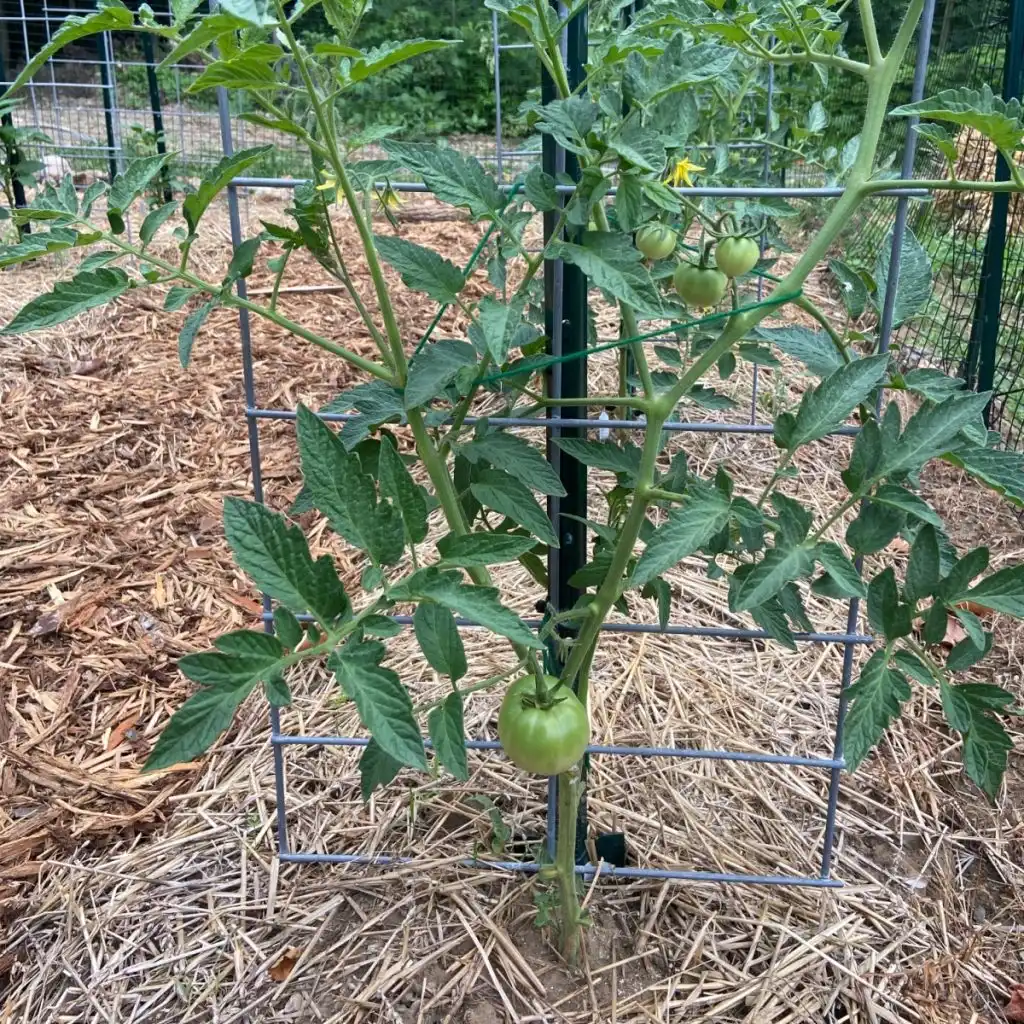
Consistent and Deep Watering Practices
One of the main elements of mid-season tomato plant care is maintaining consistent moisture in the soil. Tomatoes need regular watering, especially as the fruit begins to develop. The soil should stay moist but not soggy.
Watering deeply once or twice a week, aiming for about 1 to 1.5 inches of water, helps the roots grow strong and reach deeper into the soil. Shallow watering can lead to weaker roots and stress the plant.
It is best to water tomato plants at the base rather than overhead. Using a soaker hose or watering can at the soil line prevents water from sitting on the leaves, which can lead to fungal diseases like blight or leaf spot. Wet foliage creates a favorable environment for these diseases, so keeping leaves dry is an important part of mid-season tomato plant care.
As the tomatoes start to ripen, watering should be reduced slightly. This helps concentrate sugars in the fruit, which improves flavor and sweetness.
However, it is still important to avoid letting the soil dry out completely. One simple way to check if the plants need water is to stick a finger into the soil about an inch deep. If it feels dry at that depth, it is time to water.
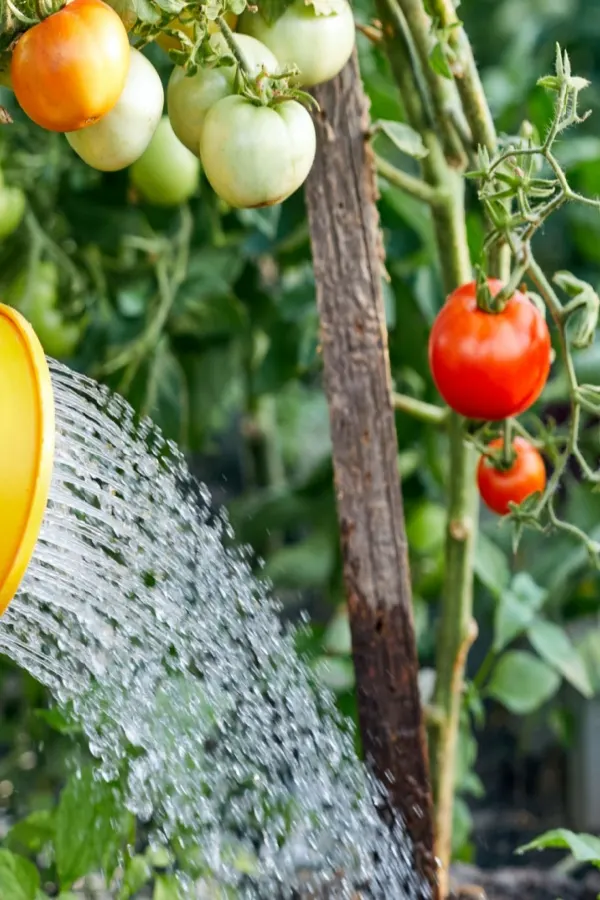
Fertilizing for Flowering and Fruit Development
Fertilization is another key part of mid-season tomato plant care. During the early growth phase, tomatoes need nutrients to build strong foliage and roots. But once flowers appear and fruit starts to form, the nutrient needs change. A balanced fertilizer that includes phosphorus is important because phosphorus supports flowering and fruit development. (Affiliate Product link: Farmer’s Secret Fruit & Bloom Booster)
When the tomato plants begin flowering, switching to a fertilizer that is lower in nitrogen can help. Nitrogen encourages leaf growth, but too much of it at this stage can lead to lots of leaves and fewer fruits. Using a fertilizer with less nitrogen and more phosphorus helps the plant focus on producing fruit rather than excessive foliage.
Some gardeners use compost tea or liquid fertilizers as part of their mid-season tomato plant care routine. These provide a gentle, steady supply of nutrients that the plants can absorb easily. Liquid fertilizers can also be applied more frequently without the risk of overfeeding.
Calcium is an essential nutrient for tomatoes and often needs attention during mid-season care. If the fruits develop dark, sunken spots at the blossom end, this could be a sign of blossom-end rot, which is caused by calcium deficiency. To prevent or correct this, gardeners can add a liquid calcium supplement to their feeding routine. This helps strengthen the fruit and reduce damage. (Affiliate Product Link: Bonide Rot-Stop)
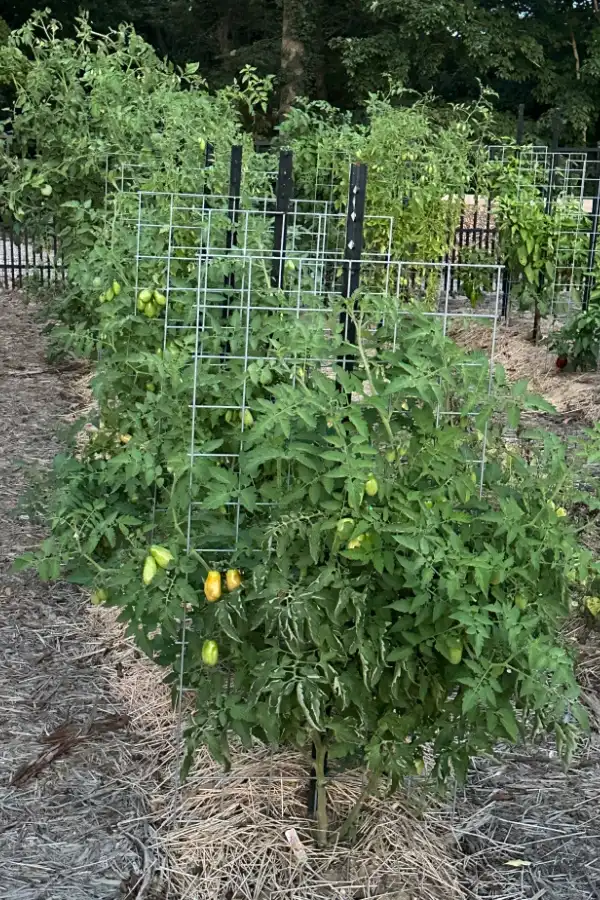
Pruning Mid-Season Tomato Plants for Energy and Airflow
Pruning is a practice that plays an important role in mid-season tomato plant care. Removing suckers, which are small shoots that grow in the joint between the main stem and a branch, allows the plant to direct energy to fruit production. These suckers can take energy away and cause the plant to become bushy and crowded. (See related article: Pruning Off Tomato Suckers – How & Why To Do It For Better Tomatoes!)
In addition to removing suckers, the majority of branches that are not producing fruit or flowers should be pruned away. This helps improve air circulation around the plant. But it also reduces risk of disease, and focuses the plant’s resources on producing and ripening fruit.
When pruning, it’s important to use clean, sharp tools such as pruners or a knife. This reduces the chance of spreading disease and makes cleaner cuts that heal faster. Regularly disinfecting tools between plants is also recommended.
Additional Practices for Mid-Season Tomato Care
Other important practices contribute to successful mid-season tomato plant care. Mulching around the base of the plants helps retain soil moisture by reducing evaporation. It also suppresses weeds that compete for water and nutrients.
Another benefit is that mulch prevents soil from splashing onto the lower leaves when it rains or when watering, which reduces the chance of soil-borne diseases infecting the plants.
Providing proper support for tomato plants is essential during mid-season care. As the plants grow larger and bear heavier fruit, they need stakes, cages, or trellises to keep them upright. Supporting the plants prevents fruit from touching the ground where it may rot and keeps the plant structure healthy.
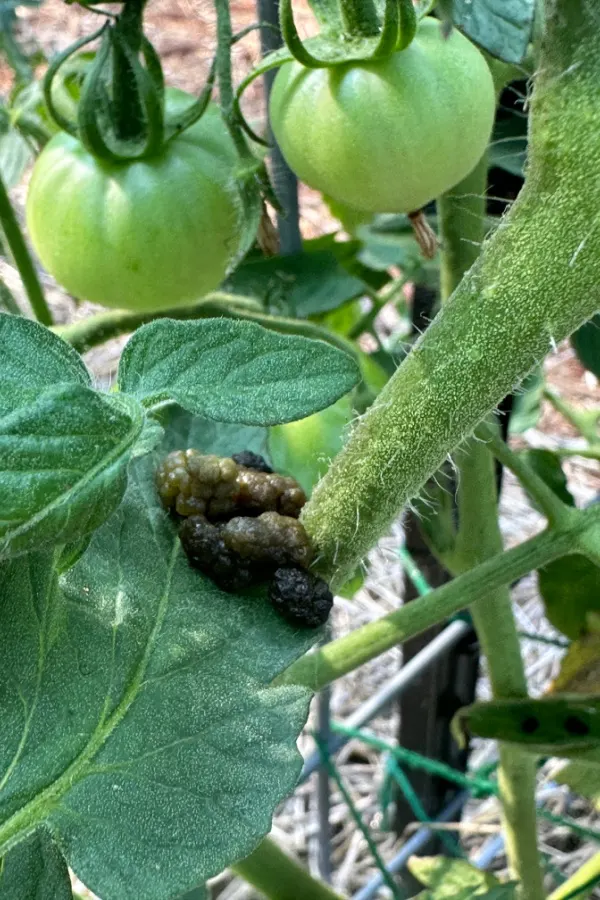
Regular inspection for pests and diseases should also be part of mid-season tomato plant care. Tomato plants can attract common pests like aphids, tomato hornworms, and whiteflies.
Early detection helps prevent infestations from becoming severe. If pests or signs of disease are an issue, appropriate actions such as removing affected leaves, finding and removing the hornworms, or applying other treatments can keep plants healthy.
Focus on Balanced Watering, Fertilizing, and Pruning
Mid-season tomato plant care is a balance of maintaining consistent moisture, providing the right nutrients, and managing plant growth through pruning. By watering deeply and at the base, adjusting fertilizer as the plant transitions to fruiting, and removing suckers and unproductive branches, gardeners can support strong, productive plants.
Keeping soil moist but not waterlogged, mulching to conserve moisture and reduce weeds, and giving plants proper support all contribute to a better growing environment. Ensuring the plants get enough sunlight and checking regularly for pests and diseases also play an important role in successful tomato growing.
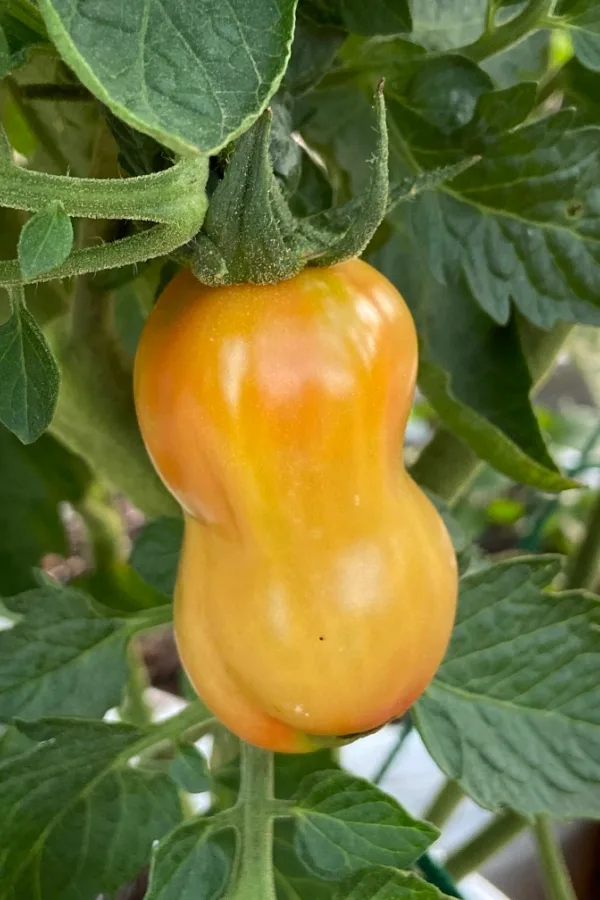
Gardeners who follow these mid-season tomato plant care practices will have a better chance of enjoying healthy plants and a bountiful harvest at the end of the season. Paying close attention to watering, fertilizing, pruning, and plant health during this critical mid-season period can make a big difference in the quality and quantity of tomatoes produced.
Follow Our Facebook Page For Even More Great Tomato Growing Tips! I Grow Tomatoes Facebook Page
I Grow Tomatoes is a website created for those who love all things about tomatoes – from planting and growing – to cooking and canning! We publish two articles every week, 52 weeks a year. Sign up today to follow via email! This article may contain affiliate links.
